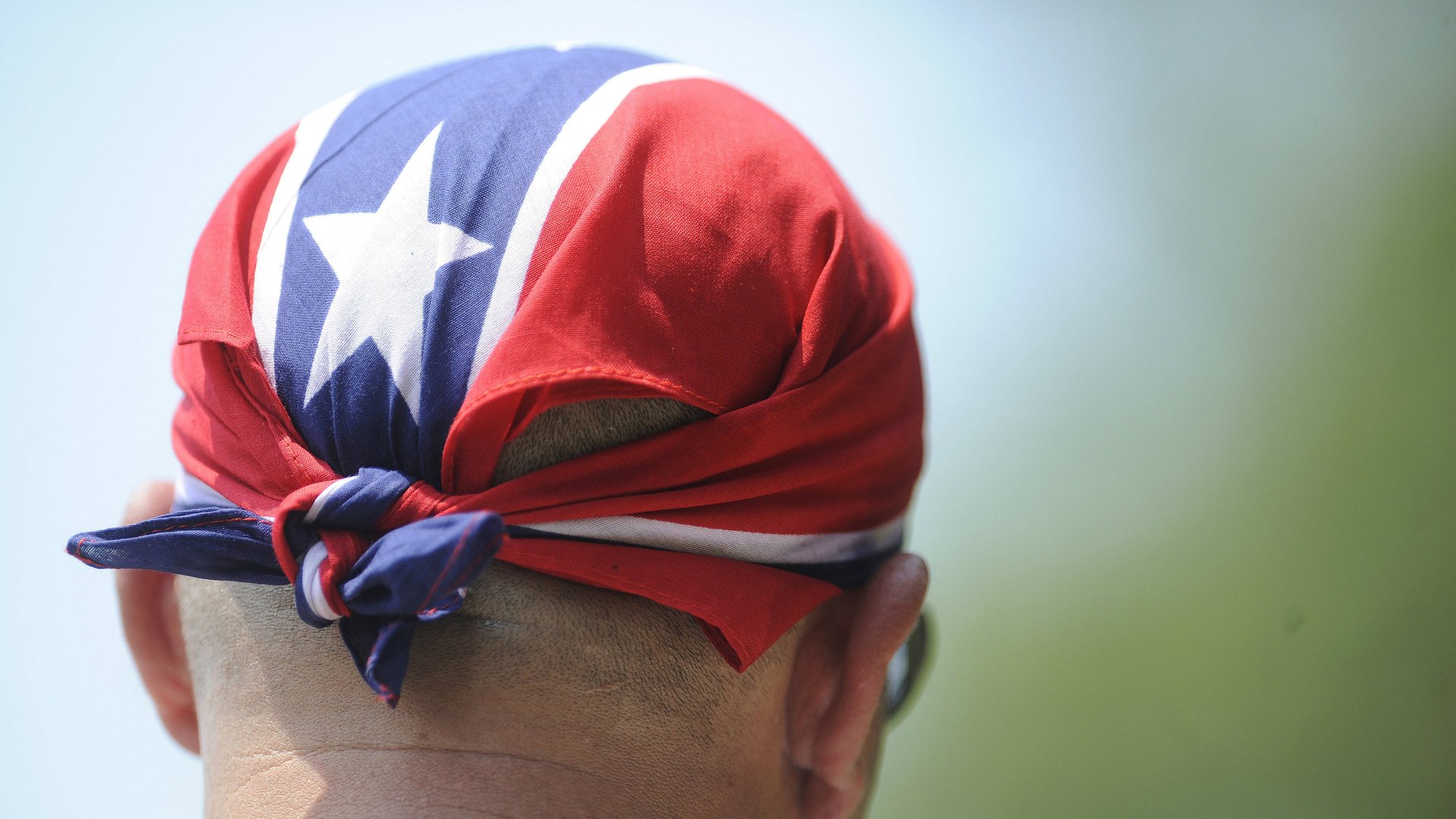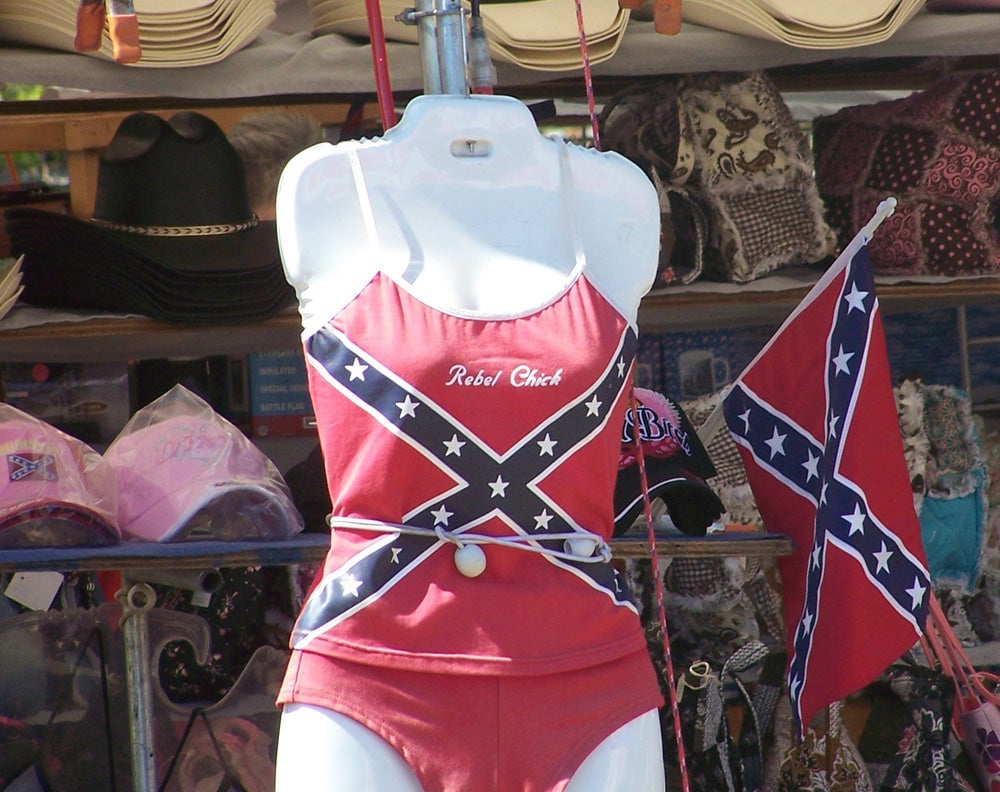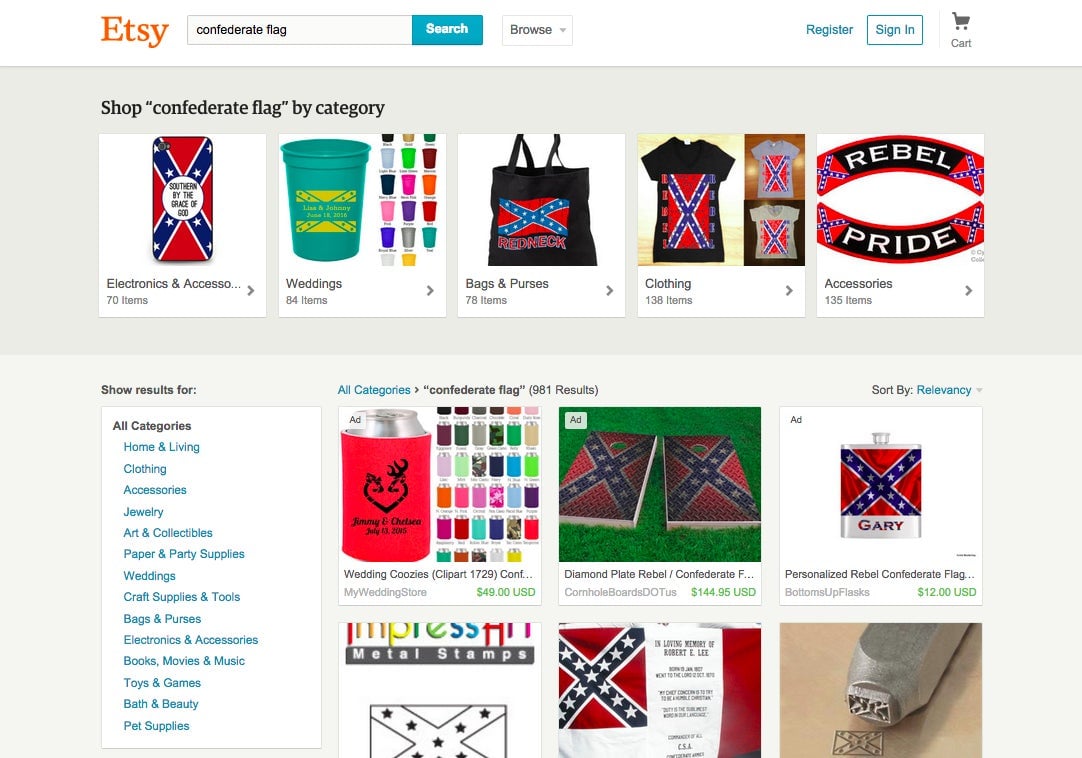Will banishing the Confederate flag actually increase its power?
Following the shooting deaths of nine people in a historically black Charleston church by white man apparently trying to start a race war, South Carolina governor Nikki Haley finally joined the call to take down the Confederate flag from her statehouse’s lawn. Then the US retailers Walmart, Sears, Kmart, Amazon, Ebay, Target, and Etsy announced a ban on all Confederate flag-themed merchandise, removing it from their websites and stores across the country.


Following the shooting deaths of nine people in a historically black Charleston church by white man apparently trying to start a race war, South Carolina governor Nikki Haley finally joined the call to take down the Confederate flag from her statehouse’s lawn. Then the US retailers Walmart, Sears, Kmart, Amazon, Ebay, Target, and Etsy announced a ban on all Confederate flag-themed merchandise, removing it from their websites and stores across the country.
Despite its connection with the American Civil War and slavery, the display of the Confederate flag, like any flag, is protected by the US Constitution. Still, the wave of protests calling for the flag’s removal has prompted retailers to reconsider their inventory—and some activists are campaigning to ban the polarizing flag altogether.
So, how does one effectively neutralize a loaded symbol? Here are three possible scenarios:
Let market forces banish it
“Activists have a small window of opportunity to have the flag removed before the old status quo sets back in,” says Texas State University sociology professor and criminology expert Nathan W. Pino. “[The] pressure from the business community is helping the cause.”
Pino is optimistic that the purging of the flag from the retail sector will help finally decommission the contested banner. “If the flag is removed, there will be a temporary increase in sales and support for the flag among strident believers,” he predicts. And indeed, there has been a dramatic spike in online sales of “rebel flags” in the last week.
But Pino thinks that this fervor will prove a short-lived fad. ”The symbolic power of the flag may increase temporarily, but the idea of it as a negative symbol will also strengthen,” he tells Quartz.
Kill it with kitsch
It may be a moot point now that these products are being expunged from the shelves of big-box stores, but could allowing the flag to remain in the free market for bric-a-brac—on lighters, bikinis, shot glasses, acrylic nail tips, board shorts—actually serve to disempower it?

Could American consumers and their voracious appetite for a kitschy kaboodle of culture have eventually stripped the Confederate flag of its status by making it prosaic and commonplace?
The answer, it appears, is that the Southern Cross in a tacky Lady Pantera fleece blanket or a faux “distressed” beer can koozie did not succeed in robbing it of its potency as a symbol of white supremacy—or as a deeply hurtful reminder of America’s brutal racial legacy.

Ban it outright
For some, “free speech” is a poor justification for public racism.
Pino sees a government ban on a racist symbol as a positive and effective step. In Germany, where the display of the swastika and all symbols used by the Nazis is a criminal offense, Neo-Nazis who sport the symbols are marginalized and ridiculed, he points out.
But does banning the symbol actually imbue it with more power? Does making the flag taboo elevate its status as an even more loaded outsider symbol for the next terrorist to revere? If the flag becomes illicit, does it also become cool?
Michael Welch, who teaches in the criminal justice program at Rutgers University and has written a book on flag burning says banning a symbol usually backfires. ”For activists there are more effective ways to confront racist symbols, such as bad publicity and boycotts,” he tells Quartz.
Even if an outright ban is not in the cards in the US, Pino says a widespread ban in retail outlets, along with the the majority’s outcry, is necessary to make the flag unfashionable and undesirable.
“There are many people who are only casually wedded to the white-washed history of the battle flag, and wear or display the flag as a sort of fashion statement,” says Pino. “Banning the flag from government property and reducing opportunities to purchase merchandise depicting it will likely persuade many to abandon that symbol.”
But he stopped short of suggesting that banning a flag can actually cure a society of racism. “Racism will never fully go away,” he said. “It will always reappear in new guises.”